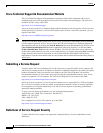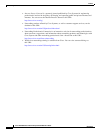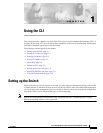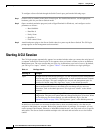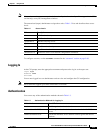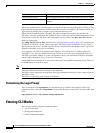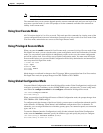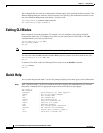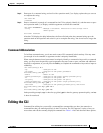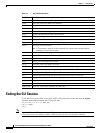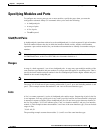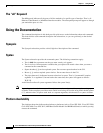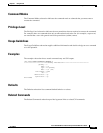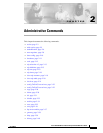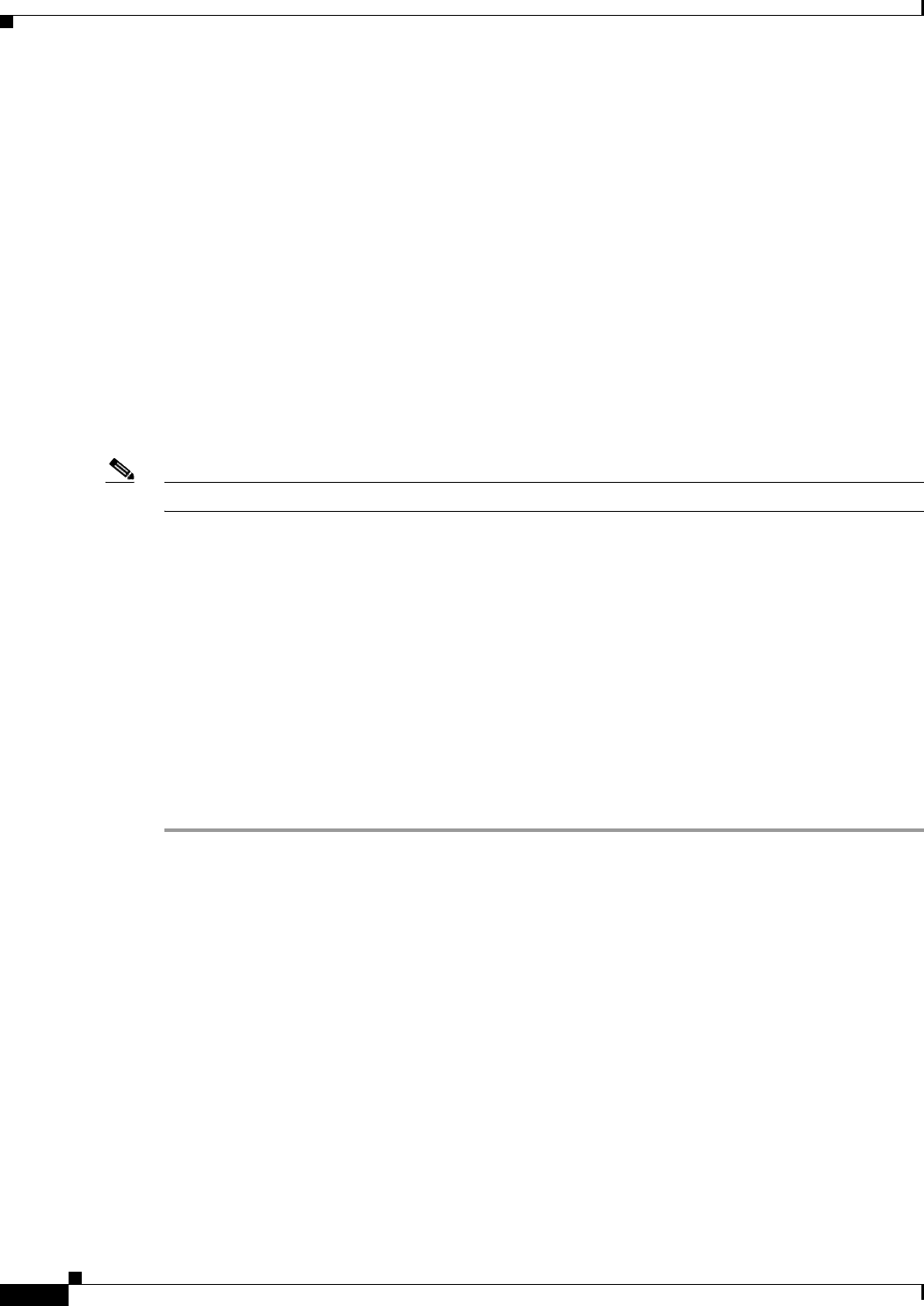
1-6
Cisco SFS 7000 Series Product Family Command Reference Guide
OL-9163-02
Chapter 1 Using the CLI
Exiting CLI Modes
The commands that you enter in a configuration submode apply to the specified modules and ports. The
Ethernet Management port, however, does not require you to specify a port number because there is only
one active Ethernet Management port during a system session.
SFS-7000P(config)# interface mgmt-ethernet
SFS-7000P(config-if-mgmt-ethernet)#
Exiting CLI Modes
Most commands are mode-dependent. For example, you can configure clock settings in Global
Configuration mode only. To configure the system, you must enter and exit CLI modes. The
exit
command returns you to the previous mode.
SFS-90(config-if-fc-5/1)# exit
SFS-90(config)# exit
SFS-90#
Note If you enter the
exit
command in User Exec mode or Privileged Exec mode, your telnet session ends.
You may also enter the exit command with the all keyword to return to User Exec mode in one step.
SFS-90(config-if-fc-5/1)# exit all
SFS-90>
To return to User Exec mode from Privileged Exec mode, enter the
disable
command.
SFS-90# disable
SFS-90>
Quick Help
You can enter the question mark (?) at the CLI prompt to display one of three types of user information.
Step 1 Enter a question mark (?) at the CLI prompt at any time to display the commands that you can enter.
Only those commands that are appropriate to the current mode and user login appear.
SFS-7000P> ?
Exec Commands:
broadcast - Write message to all users logged in
enable - Turn on privileged commands
exit - Exit current mode
help - Show command help
history - Show command history
login - Login as a different user
logout - Logout of this system
ping - Send echo messages
show - Show running system information
terminal - Set terminal line parameters
who - Display users currently logged in
write - Write text to another user



